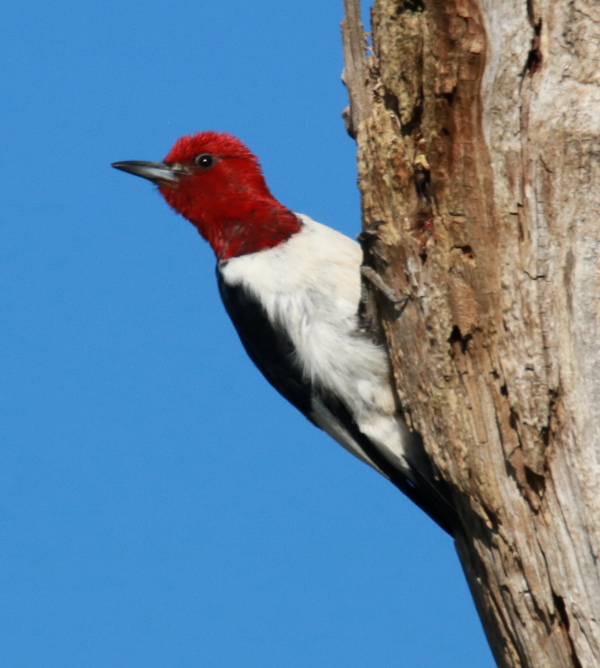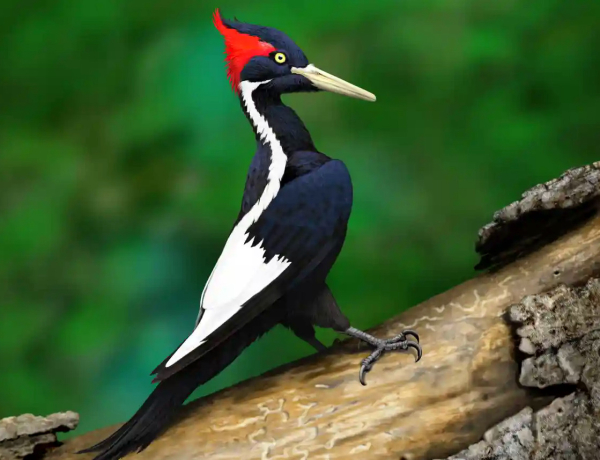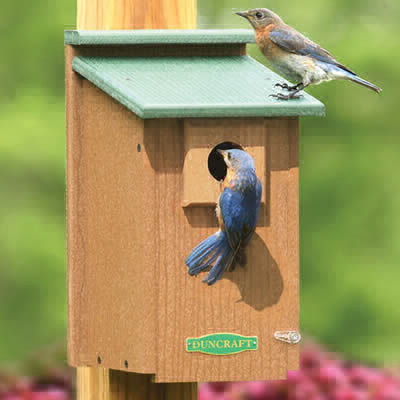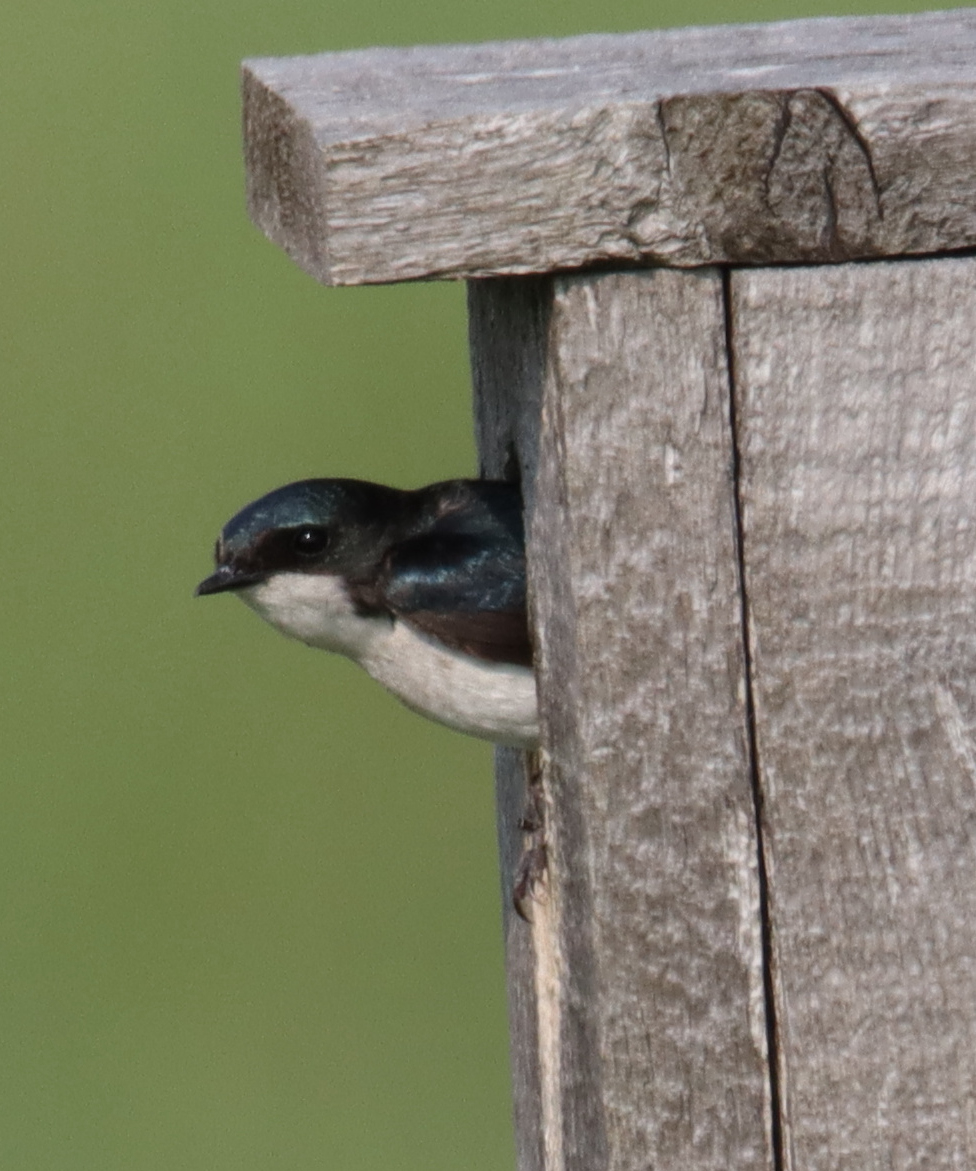Woodpeckers’ Brain Power

Woodpeckers use their bills to excavate nesting cavities, to forage for insects and grubs found in wood or tree bark, and “drum” their beaks on wood to announce their territory. When we watch a woodpecker hitting its fairly pointed beak into a branch or tree trunk, it’s easy to wonder how the brain of a woodpecker withstands the seemingly unhealthy impact each time its beak hits the wood. This is especially true when we consider that during territorial “drumming,” some woodpeckers hit their beaks up to 25 times per second against trees.
Biologists have long described a woodpecker’s brain is protected from the impacts, perhaps by cushioning skull, a beak that absorbs some of the force, or a tongue that wraps around the brain to provide a level of protection from concussion or injury. However, results from a new study reveal the opposite: The birds actually minimize the need for shock absorption. How? Their head and beak essentially act like a stiff hammer, striking and stopping in unison upon impact.
“When we see these birds in action, hitting their beak against a tree quite violently, as humans we start wondering how does this bird avoid getting headaches or brain damage,” said Sam Van Wassenbergh, a researcher at the University of Antwerp in Belgium. Van Wassenberg wasn’t convinced by the common explanations found in ornithology books and other publications, so he organized a team of researchers who recorded high-speed videos of woodpeckers while they were “pecking,” which revealed some remarkable slow-motion details.
For example, “They close their eyes at the moment they impact the wood to protect their eyes from splinters,” Van Wassenbergh revealed. The videos also showed that woodpeckers’ beaks often get stuck in wood, but they break free almost instantly, thanks to an adaptive beak design that provides independent motion of the upper and lower mandibles.
However, the videos did not show any sign that the woodpecker’s brain is somehow cushioned. “The way we see the head behaving is very rigid, like you would use a hammer hitting wood,” Van Wassenbergh explained. That means a woodpecker’s brain repeatedly experiences deceleration that would cause a concussion in a human brain. Yet the woodpecker brain appears to be unaffected, even after thousands of impacts during a single day.
That is possible because a woodpecker’s brain is protected – not by cushioning, but by its tiny size and weight, Van Wassenbergh said. “An animal that has a smaller-sized brain can withstand higher decelerations,” he explained. “That’s a biomechanical law.” That idea was proposed in 2006 by Lorna Gibson, a professor of biomechanical engineering at MIT. Now, it has been confirmed by Van Wassenbergh’s high-speed videos.
A woodpecker’s brain is about 700 times smaller than a human brain. “So that is why even the hardest impacts we observed are not expected to cause any concussion,” Van Wassenbergh said.
The videos taken during the study are part of the research details that were published in the journal Current Biology, which can be accessed at Woodpeckers minimize cranial absorption of shocks: Current Biology (cell.com) The original news story was provided by Minnesota Public Radio at A woodpecker’s brain takes a big hit with every peck: study | MPR News
A complimentary article that was published by Audubon on this subject appeared at New Study Shakes Up Long-held Belief on Woodpecker Hammering | Audubon






